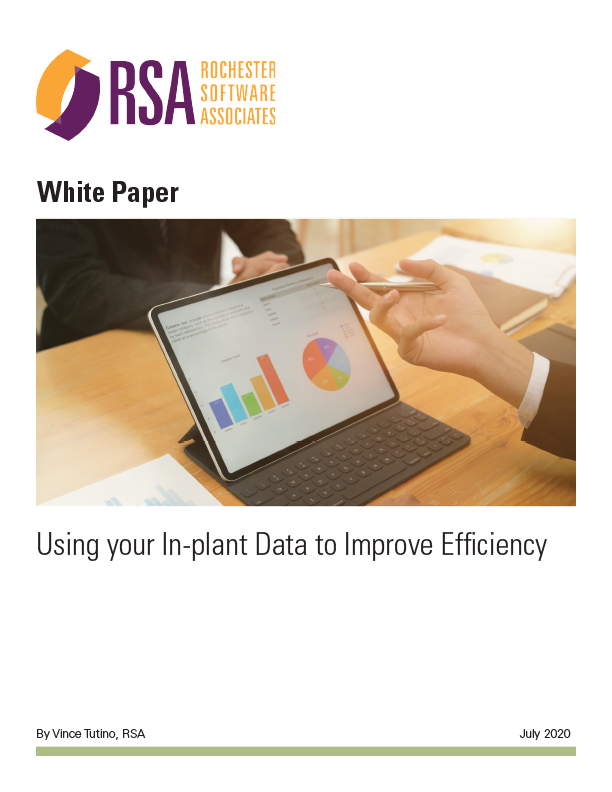- Howie Fenton
- |
- September 18, 2020

For most people, the 2011 movie Moneyball was a David and Goliath story about how Oakland Athletics manager Billy Bean used some voodoo math and economics to fight the team’s way into the World Series to battle against the Goliath New York Yankees. But it was also a wakeup call that motivated some people to reconsider what we measure, how we measure it and how we use measurements is changing for all industries.
In the movie Moneyball there is an attempt to move from a well-accepted traditional metric known as the "batting average" to a different metric which was "getting on base". This new metric was considered wild because everyone assumed that batting average was more indicative of a baseball team’s success then the metric getting on base. As shown in the movie, it is not.
At a higher level this means that the batting average metric was less predictive of success. The most common metric used in printing companies is pages printed. It is assumed that the more you print or mail the more successful the company. Like batting average, this is not the best metric because there are frequent stories about how big, busy companies are closing their doors.
In-Plant Print Center VS. Commercial Printer Metrics
If you try to apply the lessons from Moneyball you might ask, "What metrics are we using that are not as predictive of success as other metrics?" Commercial printers and in-plants often use different metrics to evaluate their performance. In my experience commercial printers tend to focus on profitability and sales growth to measure top-line growth and cost of goods sold (COGS) to control the bottom line. In contrast, in-plants tend to focus more on page growth for top line and use year to date sales vs. budget and overtime to focus on the bottom line.
Two other important metric benchmarks are good "big picture" metrics for both: sales per employee (SPE) ratio and payroll as percentage of revenue (PAPR). Both are good indicators of correct staffing levels and costs but are more big-picture and less about day to day operations.
NexGen Metrics – Utilization Rate
In Moneyball, getting on base was a measurement collected, but not considered as predictive of success as batting average. For in-plants, is it possible that equipment utilization rates or competitive pricing are more predictive of success then page counts or year to date sales vs. budget?
Equipment utilization rate is not new; in-plants and commercial printers have used it for years. In simple terms it is how many hours a machine is running divided by the total hours the plant is open. For example, if you keep a press running 6 hours out of 8 hours the utilization rate is 75%, which is a very high utilization rate for an offset or toner press. The problem, however, is that utilization rate is a very good measure for some but not all equipment. For the busiest equipment such as presses and inserters this is a great measure but for a host of finishing options that may only run once a week this is a bad metric. Combining all utilization rates to an average does not work well, either.
NexGen Metrics – Competitive Pricing
In surveys and focus groups of in-plant’s customers, high pricing and slow turnaround time are the two most frequent complaints. More importantly competitive pricing is one of the most frequent metrics used by outsourcers and facilities management companies when they talk to management. And the worst fact is that in the 2019 IPMA white paper The Next Generation Tactics and Strategies for In-Plant Service Providersonly 11% of participants reported they performed a pricing analysis every year.
Could competitive prices be more predictive of in-plant success then other metrics? Consider this: we have been compiling data of competitive pricing as a benchmark for the last few years and broke out the preliminary results into competitive price types: leaders, industry standard and laggards:
- In-plants with less than 40% of their products competitively priced are laggards and are very susceptible to outsourcing
- In-plants with 40%-60% of their products competitively priced are average or the industry standard and at a moderate risk for outsourcing and
- In-plants with more than 60% of their products competitively priced are competitive price leaders and at a low risk for outsourcing.
Learn More about Metrics
If you’re interested in learning more about metrics, attend Howie’s two presentations at the Printing United digital experience: educational session, "By the Numbers: KPIs, Metrics, and Ratios" and "From Surviving to Thriving: Reimagining the Post-COVID-19 Return," the in-plant forum keynote presentation on November 2, 2020. RSA customer, Tacoma Schools will present about workflow efficiency at the in-plant forum, as well. Printing United registration is free and will open late this month.

Don't Wait, Download the Related RSA White Paper
Get our whitepaper entitled, "Using your In-plant Data to Improve Efficiency" today.